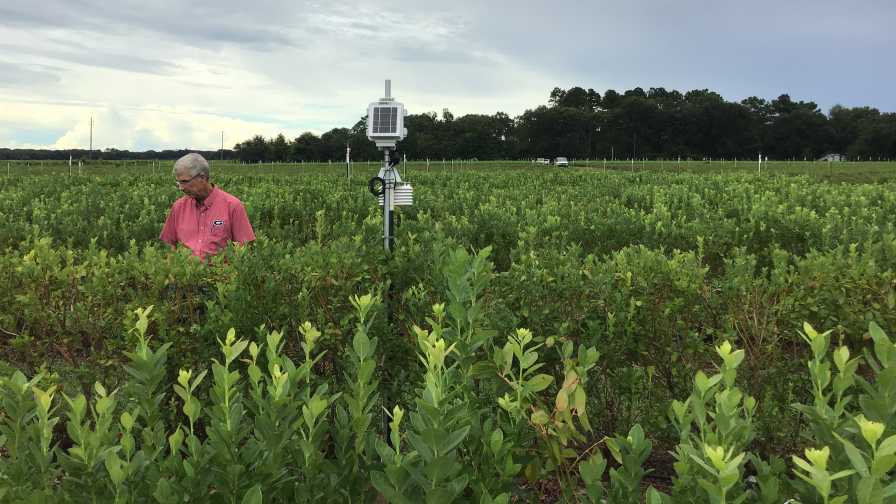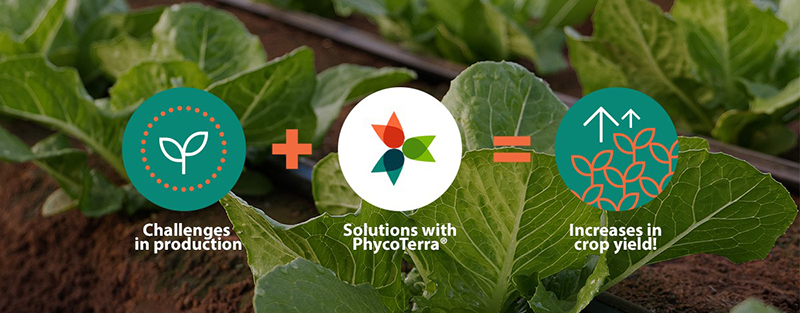Why There’s More To Irrigation Than Just Watering

Blueberries are among the crops that benefit from careful irrigation monitoring.
Photo courtesy of WaterPoint
Irrigation equipment suppliers deal with growers all the time, so who better to ask what holes might exist in growers’ knowledge? We posed a simple question: What is one thing that fruit growers should know about irrigation that they might not already realize?
Here is a sampling of their responses:
• NEIL SCHULTZ, GENERAL MANAGER, ALTRAC
Cellular pricing is declining rapidly, which is driving a migration of irrigation automation away from radio spectrum. Older approaches, which employ radio notes that communicate to a central modem, create a single point of failure and require the grower to maintain a complex communication network on their farm. Radio communication often has line-of-sight issues and coverage gaps on hilly terrain. Each Altrac device communicates directly to the cloud via cellular and offloads network setup and maintenance from the grower to the telecommunications provider.
• DOUG ANALLA, SENIOR MARKETING MANAGER, DAVIS INSTRUMENTS
Salinity sensors allow growers to make sure that irrigation additives reach the proper root zone and are not flushed beyond; optimizing plant health and getting the most return from additive dollars spent. Both over- and under-watering are issues successful growers need to avoid. EnviroMonitor helps growers better manage their water resources and optimize the health of their crops. On the Davis Mobilize app and/or on WeatherLink.com, growers can see and share detailed real-time soil moisture and evapotranspiration (ET) and have precise control of irrigation, with flow meters and pressure sensors.
• BRIAN BOURBONNAIS, DIRECTOR OF SALES AND MARKETING, IRROMETER
When you set the timing of your irrigation cycles to be based directly off the plant water demand, you can increase both yield and quality. In addition to our soil moisture monitoring tools, we have soil water sampling hardware (Lysimeters) to make nutrient management easier.
• JOHN ROWLEY, ROTATOR SPRINKLER PRODUCT MANAGER, NELSON IRRIGATION
New products that improve irrigation systems and their operation are getting introduced each year. Examples include micro sprinklers with quick clean technology and flow regulation at low pressure. Wireless automation systems that are easy to use and set up and that provide remote control can be retrofitted onto existing systems for about $200 to $600 per acre. Innovations in automatically flushing filter systems are available. And sap flow and other new monitoring systems are improving irrigation scheduling decisions.
• BEN SMITH, TECHNICAL SALES SUPPORT SPECIALIST, SEMIOS
The way water interacts with soil and plants is complicated. Water often does not move through the soil the way we think it does because we can’t “see” into the soil without the proper monitoring equipment. Data is great but useless unless it can be easily used to make efficient and effective decisions. The Semios crop management platform offers a full suite of integrated irrigation tools that can include automatically calibrated soil moisture probes, available water content measurements, in-canopy weather stations, per-acre ET forecasting, pressure transducers for real-time monitoring of irrigation set time and duration as well as irrigation scheduling all under one platform — with one login to simplify a grower’s experience and save time.
• JEFF NUNES, HEAD OF TECHNICAL DEPARTMENT U.S., AQUA4D
One thing about water that many do not know is the importance of the structure of water molecules and how hydrophobic/hydrophilic forces affect the interaction of their water with their soils. Through academic collaborations across the world, our mission at Aqua4D is to bring this issue to the forefront. Our technology enables true “precision irrigation,” allowing more frequent irrigation with less volume and keeping soils moist for longer. We are transforming the relation between irrigation water and soils and restoring degraded lands.
• JOSÉ RODRÍGUEZ, BUSINESS DEVELOPMENT MANAGER, DOSATRON
Localized irrigation not only maximizes the use of a limited resource such as water, groundwater particularly, but allows to target fertilizers to the plant root zone. This, combined with a continuous feed fertilization program, can minimize fertilizer runoff, which carries many negative consequences on the environment, such as the proliferation of algae blooms in streams and lakes.
• TRAVIS GOLDMAN, IRRIGATION MANAGEMENT ADVISOR, HORTAU
Precision irrigation monitoring using soil tension data in real-time has alleviated the guesswork and altered scheduling water. Some fields may fall behind due to over/under irrigation, and using a weekly water allocation could vastly
hurt fruit development and sizing. Irrigation timing can vary depending on the soils, varieties, and irrigation type. Some fields may require the same hours of water in a week but require different frequencies and durations to optimize root water uptake.
• ARIC OLSON, PRESIDENT, JAIN IRRIGATION
Getting the amount and timing right for irrigation has the largest impact on yield. Too much (water-logged soils) or too little water in the soils will cause yields to suffer significantly. Irrigation will carry nutrients and so, if crops are over irrigated, you may be wasting nitrogen and other fertilizer, which impacts yield/growth.
• CURTIS LUTJE, GENERAL MANAGER, LAUREL AG & WATER
There is an Irrigation Bill of Rights established by the Irrigation Associations that all growers ought to be familiar with. This Bill of Rights includes a set of standards that will help growers understand what needs to be put in place on an irrigation system that will give them a higher value system and improved ROI. Our team understands and operates with these standards, ensuring that growers are getting the most out of their systems.
• MIKE ILLIA, SENIOR PRODUCT AND SOLUTIONS MANAGER, NETAFIM
The importance of pump maintenance and horsepower retention. Water tables will fluctuate from year to year based off rainfall and aquifer replenishment. If you can’t confirm that the system is running to the flow and pressure requirements of the original design, that could cause a major setback when the systems are asked to run at full capacity.
• MORGAN HALPENNY, FOUNDER, PUMPSIGHT
The performance of wells and filter stations can change much more quickly than many growers realize, whether it be from degradation of the equipment or varying irrigation loads. It is important to keep regular track of the water output and groundwater depth in your systems to ensure that you are irrigating the way you think you are.
• HYLON KAUFMANN, DIRECTOR OF BUSINESS DEVELOPMENT & MARKETING, RANCH SYSTEMS
One of the misnomers of irrigation is that you will use less water. That is not always the case. What is a definite benefit is to use water more efficiently when the plants need it and where. Also being able to schedule the running of pumps, etc. during off-peak times saves money — not just during the day when you have labor available. Ranch Systems products provide not only irrigation monitoring and control but also can support wells, storage tanks, uninhibited stream flow and water diversions for SB88 reporting.
• BILL TERRY, BUSINESS DEVELOPMENT MANAGER, WATERPOINT
When you deficit irrigate, by force or design, there are water treatment technologies proven to increase absorption — enhance the speed to refill the soil profile in the root zone — to field capacity, if that’s the goal. The electronic, chemical-free technologies enhance soil’s absorption and control leaching to fill the growth-stage demand more effectively throughout the season to utilize water resources most effectively.









